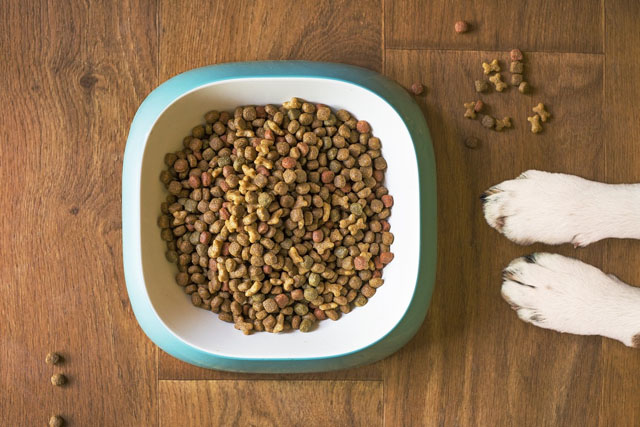



Before making any changes to your dog's food, it's important to gather information about their current diet. Take note of the brand, type, and ingredients of the food they are currently eating. This will help you make an informed decision when choosing a new dog food.
It's always a good idea to consult with a veterinarian before changing your dog's food. They can provide valuable insights and recommendations based on your dog's specific needs and health conditions. They may also suggest a gradual transition plan to minimize any digestive issues.
Once you have gathered information and consulted with a veterinarian, it's time to choose a new dog food. Look for a high-quality brand that meets your dog's nutritional requirements. Consider factors such as their age, breed, size, and any specific dietary needs they may have.
How to change your dog's food step by step? Look for a dog food that has similar ingredients to their current food to minimize the chances of digestive upset. Gradually transitioning to a new food is important to avoid any sudden changes that could upset their stomach.
When changing your dog's food, it's crucial to do it gradually. Abruptly switching to a new food can cause digestive upset and discomfort for your dog. Start by mixing a small amount of the new food with their current food. Gradually increase the proportion of the new food over a period of 7-10 days.
How to change your dog's food step by step? For the first few days, mix 25% of the new food with 75% of the old food. Then, gradually increase the proportion of the new food to 50% over the next few days. Continue this process until you are feeding 100% of the new food.
During the transition period, closely monitor your dog's reaction to the new food. Keep an eye out for any signs of digestive upset such as diarrhea, vomiting, or excessive gas. Also, observe their energy levels, coat condition, and overall well-being.
How to change your dog's food step by step? If you notice any negative reactions or if your dog's health deteriorates, consult with your veterinarian immediately. They may recommend adjusting the transition plan or trying a different type of dog food.
Every dog is different, and what works for one may not work for another. If your dog is not adjusting well to the new food, you may need to make adjustments. This could involve slowing down the transition process, trying a different brand or formula, or seeking guidance from a veterinary nutritionist.
Once your dog has successfully transitioned to the new food, it's important to maintain a consistent feeding schedule. Dogs thrive on routine, and regular mealtimes can help prevent digestive issues and maintain their overall health.
How to change your dog's food step by step? Feed your dog at the same time each day and avoid free-feeding or leaving food out all day. This will also make it easier to monitor their appetite and ensure they are getting the right amount of food.
Changing your dog's food can be a process that requires patience and persistence. Some dogs may take longer to adjust than others, and it's important to stay consistent with the transition plan. Avoid giving in to begging or offering treats from the table, as this can disrupt the transition process.
After your dog has fully transitioned to the new food, continue to monitor their health and well-being. Look for positive changes such as improved coat condition, increased energy levels, and healthy digestion. If you have any concerns, consult with your veterinarian.
If you are unsure about how to change your dog's food or if your dog is experiencing persistent digestive issues, it's best to seek professional help. A veterinary nutritionist can provide personalized guidance and create a diet plan tailored to your dog's specific needs.
Changing your dog's food can have a significant impact on their overall health and well-being. By following these steps and being patient throughout the process, you can ensure a smooth transition and provide your dog with the nutrition they need.
Leave a Reply
Related posts